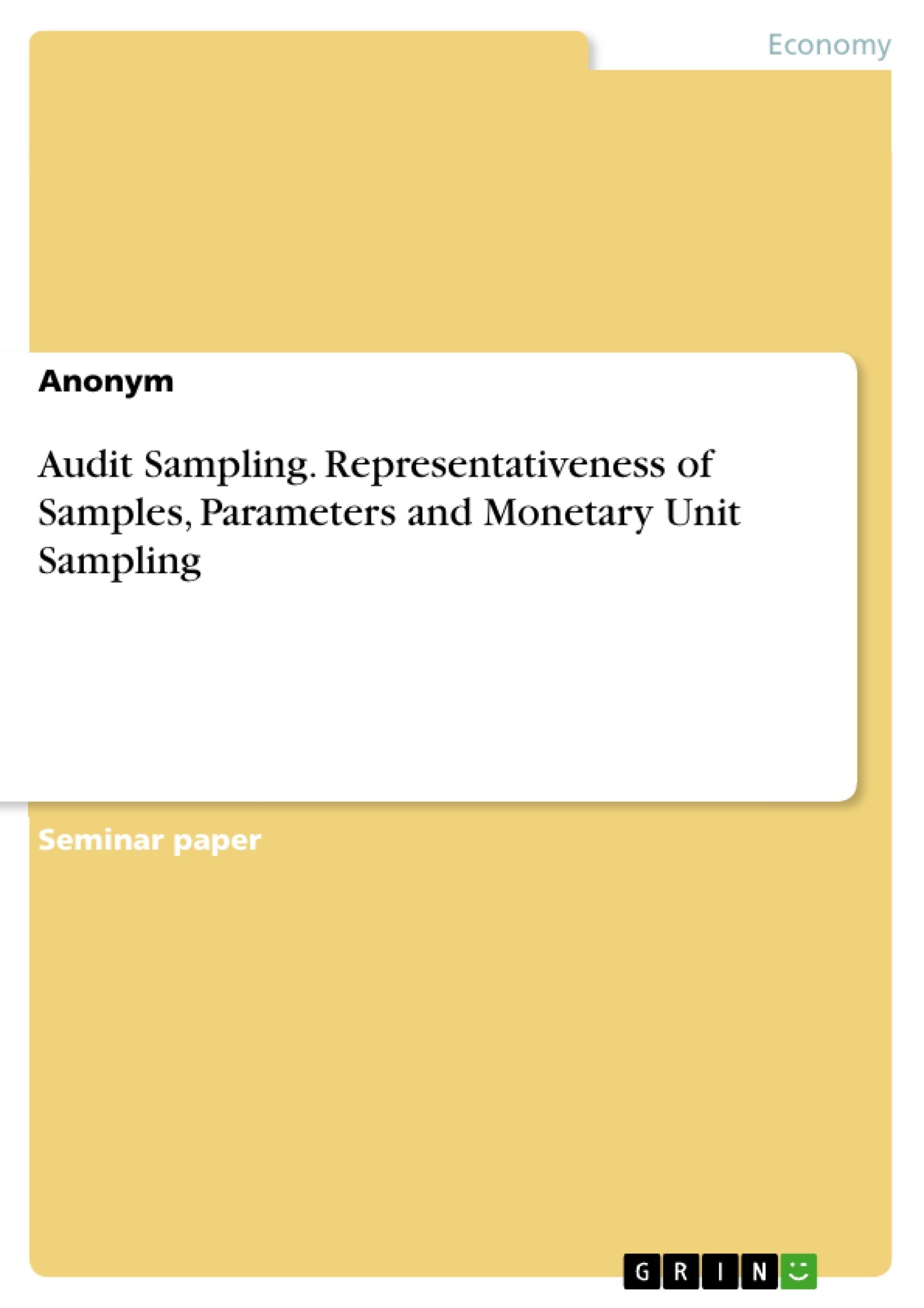The rapid growth of American companies at the beginning of the twentieth century resulted in a high demand for audits which are based on selected tests of items that represent the account balances or classes of transaction. Some auditors used to include every transaction from the respective period into the examination. However, some groups of auditors begin to develop methods to apply statistical sampling in auditing processes during the 1950s.
This paper is structured as follows: in the main part, audit sampling and relevant terms are discussed. Representativeness of the sample is mentioned, which is significant aspect to make proper conclusions in respect to the population. The different types of generating population and their advantages for sampling. Furthermore, different sampling methods with each other compared, and the advantages and disadvantages of sample selection methods are discussed. In the third part, the main parameters of audit sampling are discussed in detail and their effects on the sample size and overall audit process are mentioned. In the fourth part, MUS system and its benefits and restrictions are clarified. The fifth part summarizes and concludes with the help of the Excel sample.
- Citar trabajo
- Anónimo,, 2016, Audit Sampling. Representativeness of Samples, Parameters and Monetary Unit Sampling, Múnich, GRIN Verlag, https://www.grin.com/document/1382668
-

-

-

-
¡Carge sus propios textos! Gane dinero y un iPhone X. -

-
¡Carge sus propios textos! Gane dinero y un iPhone X. -

-
¡Carge sus propios textos! Gane dinero y un iPhone X. -

-
¡Carge sus propios textos! Gane dinero y un iPhone X. -

-
¡Carge sus propios textos! Gane dinero y un iPhone X. -

-
¡Carge sus propios textos! Gane dinero y un iPhone X. -

-
¡Carge sus propios textos! Gane dinero y un iPhone X. -

-
¡Carge sus propios textos! Gane dinero y un iPhone X.

